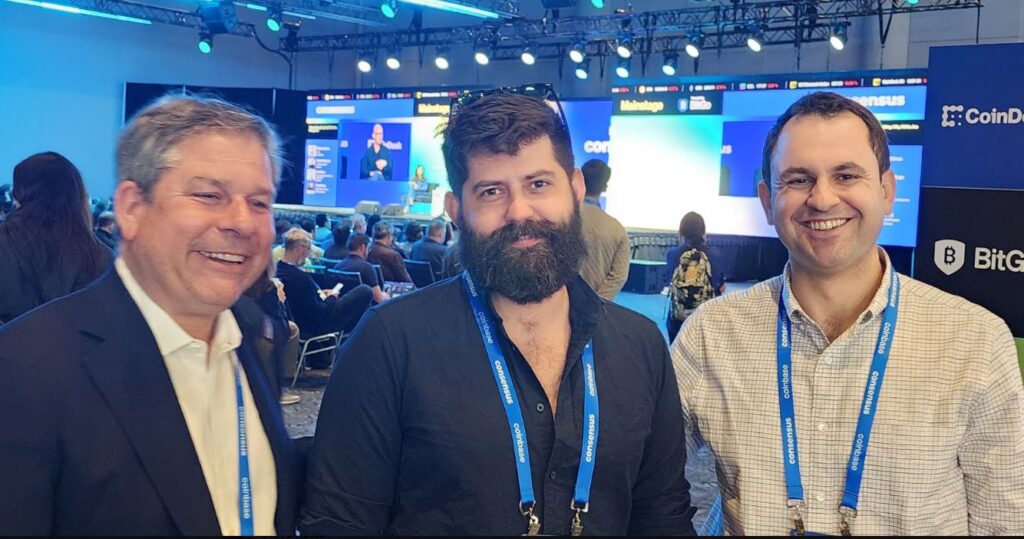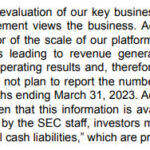Jason Guthrie, head of product at asset management firm WisdomTree, is expressing optimism about the current state of the cryptocurrency market, even though the typical excitement associated with a crypto bull run appears to be lacking. In a recent interview with Cointelegraph during the Consensus conference, Guthrie noted that unlike previous cycles driven by buzzworthy trends such as initial coin offerings (ICOs) or non-fungible tokens (NFTs), this time the market is evolving more organically.
“This time, we’ve continued to see the asset class gathering value, we’ve continued to see companies built on this technology growing revenue, growing client bases, continuing to innovate,” Guthrie said.
The cryptocurrency market has dramatically transformed since the ICO boom, which saw a staggering $33.4 billion raised in 2018. However, the landscape has shifted significantly, and, as Guthrie pointed out, there hasn’t been a similar surge in attention or monetary flow towards these speculative ventures.
Interestingly, while the market saw inflated figures during the peak of NFTs, with trading volumes reaching $57.2 billion in 2022, the aftermath has resulted in a cooling period. Nevertheless, Guthrie sees this as a positive indicator. Notably, the market capital reached an all-time high of $3.71 trillion late last year, with various entities, from video game retailers like GameStop to countries like Ukraine, beginning to explore cryptocurrencies for treasury reserves.
“I think this is starting to feel like a more mature market that is really settling on its use case,” he remarked.
While there has been a spike in memecoin activity, particularly around the release of US President Donald Trump’s memecoin, enthusiasm has waned significantly due to negative events in the space, such as failed launches and scam projects. Guthrie emphasizes that the market is still in its early days, with substantial room for innovation still ahead, implying a steadier and more sustainable future for cryptocurrency.
Insights from Jason Guthrie on the Current State of Crypto
Jason Guthrie, head of product at WisdomTree, provides valuable insights into the evolving landscape of cryptocurrency, highlighting trends that could significantly impact investors and technology enthusiasts alike.
- Optimism Amidst Market Calm:
- Guthrie expresses positivity despite the absence of the typical hype seen in previous crypto bull runs.
- The current market lacks frothy use cases like ICOs, NFTs, or DeFi lending, but continues to grow.
- Market Maturity:
- The crypto market is becoming more mature, indicating a settling of its value proposition.
- Increased corporate and governmental adoption of cryptocurrencies, illustrating a growing acceptance.
- Historical Context:
- The ICO boom peaked in 2018 but has dramatically decreased since then, highlighting a shift in investor interest.
- NFTs that surged in popularity have also cooled since their peak in 2022.
- Innovation Remains Key:
- Despite the current state of the market, Guthrie believes there is still extensive innovation to come.
- The focus is shifting away from speculative trends towards sustainable growth and practical use cases.
- Impact of Memecoins:
- Memecoin activity saw a spike recently but has subsided after a series of failed launches.
- The volatility of memecoins highlights the risks involved in speculative investments.
“I think this is starting to feel like a more mature market that is really settling on its use case, its value prop.” – Jason Guthrie
Crypto Market Maturity: The Insight of Jason Guthrie
In a recent interview at Consensus, Jason Guthrie, the head of product at WisdomTree, expressed a pragmatic optimism about the current state of the cryptocurrency market. Unlike previous cycles marked by mainstream excitement from initial coin offerings (ICOs) and non-fungible tokens (NFTs), Guthrie points toward a more stable and mature environment that continues to attract valuable investment and innovative technology.
One significant advantage of the current market landscape is the emphasis on real utility and sustainability over speculative hype. Companies are focusing on building viable products rather than jumping on the latest fad, which can translate to long-term growth and a narrower risk profile for investors. This contrasts vividly with earlier bull runs, where astronomical fundraising figures from ICOs led to volatility and many failed projects. For instance, the 2017 ICO craze generated a staggering $4.9 billion initially, only to dwindle to less than $400 million by 2019. The stark drop serves as a cautionary tale for potential investors.
However, this current steadiness has its drawbacks. Without the dramatic spikes in interest commonly associated with nascent technologies, there is a risk that potential new investors may overlook the crypto space as dull or unexciting. The attention generated during the NFT boom, which peaked in 2022 with a trade volume of $57.2 billion, galvanized mainstream awareness. Now, as enthusiasm wanes, a possible disconnect could emerge, causing market stagnation.
This more mature market structure benefits institutional investors and established companies that are looking for sustainable returns. They are less likely to be swayed by flash-in-the-pan trends, allowing them to build lasting infrastructure in the space. Conversely, newer retail investors may find it challenging to navigate a landscape devoid of the previous excitement, which could lead to concentrated investments in non-viable alternatives or even discourage participation altogether.
Furthermore, while Guthrie suggests that the memecoin hype surrounding particular digital assets like Solana has minimized compared to past episodes of exuberance, it signals a dual-edged sword. This phenomenon might create opportunities for speculative trading but can simultaneously lead to disillusionment if many memecoins fail, as witnessed with recent rug pulls and disappointing launches like the Libra project.
The environmental developments within the cryptocurrency ecosystem, spearheaded by resilient figures like Guthrie, indicate that while the market seeks to solidify its purpose and value proposition, stakeholders must tread carefully to ensure that interest remains vibrant without backtracking into the pitfalls of prior cycles. This careful balance is paramount in fostering an inclusive environment that caters to both cautious investors and the more risk-tolerant individuals eager to explore the digital asset landscape.
















